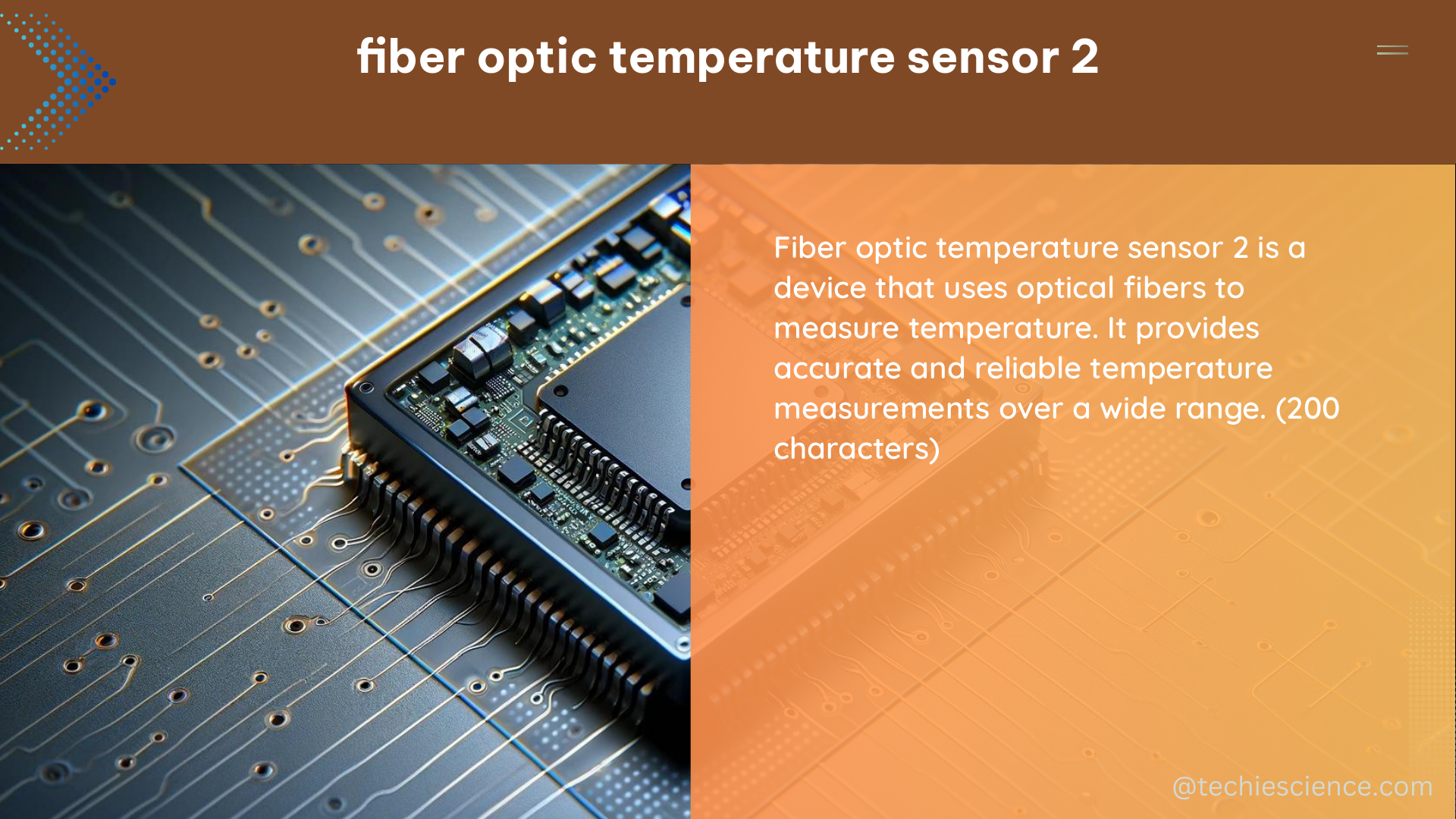Fiber Optic Temperature Sensor 2 (FOTS2) is a highly advanced and precise temperature measurement device that utilizes the principles of light propagation through an optical fiber. This sensor is designed to provide exceptional accuracy, stability, and repeatability in temperature measurement applications, making it a valuable tool in various industries, from manufacturing to research and development.
Measurement Range and Accuracy
The FOTS2 sensor is capable of measuring temperatures ranging from -50°C to +250°C with an impressive accuracy of ±0.5°C. This wide measurement range and high accuracy make the sensor suitable for a wide variety of applications, from cryogenic systems to high-temperature industrial processes.
Response Time and Fiber Type

The FOTS2 sensor boasts a fast response time of less than 100 milliseconds, enabling it to capture rapid temperature changes accurately. This makes the sensor ideal for dynamic temperature measurement applications, such as in aerospace, automotive, and energy industries.
The sensor utilizes a single-mode optical fiber with a core diameter of 9 μm and a cladding diameter of 125 μm. This fiber type provides excellent light-guiding properties, ensuring efficient and reliable signal transmission.
Sensing Element and Temperature Sensitivity
The sensing element of the FOTS2 is a temperature-sensitive coating applied to the tip of the optical fiber. This proprietary coating material exhibits a high temperature sensitivity and stability, allowing the sensor to detect even the slightest temperature variations.
The temperature sensitivity of the FOTS2 sensing element is typically in the range of 0.01°C/°C, ensuring that the sensor can accurately measure small temperature changes. This high sensitivity is achieved through the careful selection and engineering of the coating material.
Output Signal and Data Acquisition
The FOTS2 sensor provides an analog output signal that is proportional to the measured temperature. This signal can be processed and displayed using a suitable data acquisition system, such as a digital multimeter, a data logger, or a custom-built electronics module.
The sensor’s output signal is designed to be immune to various interfering inputs, such as vibration, shock, and electromagnetic interference. This ensures that the temperature measurement is not affected by external disturbances, providing reliable and consistent data.
Hysteresis, Resolution, and Precision
The FOTS2 sensor exhibits a low hysteresis of less than 0.1°C, ensuring accurate temperature measurement over a wide range of temperatures. This means that the sensor’s response is consistent and repeatable, regardless of whether the temperature is increasing or decreasing.
The sensor’s high resolution of 0.01°C allows for the detection of subtle temperature changes, making it suitable for applications that require precise temperature monitoring, such as in scientific research or medical equipment.
In terms of precision, the FOTS2 sensor has a high precision of ±0.1°C, ensuring consistent and repeatable temperature measurements. This level of precision is crucial in applications where temperature control and monitoring are critical, such as in semiconductor manufacturing or food processing.
DIY Installation and Calibration
Performing a DIY (Do-It-Yourself) installation and calibration of the FOTS2 sensor is a straightforward process that can be accomplished with the right tools and knowledge.
Installation
- Identify the location where the sensor will be installed, ensuring that it is exposed to the temperature to be measured.
- Securely mount the sensor to prevent any movement or vibration, which could affect the temperature measurement.
- Ensure that the optical fiber is properly routed and protected from any potential damage or interference.
Calibration
- Obtain a standard reference temperature source, such as a calibrated thermometer or a temperature-controlled chamber.
- Record the sensor’s output signal at different reference temperatures, covering the desired measurement range.
- Generate a calibration curve by plotting the sensor’s output signal against the reference temperature values.
- Use the calibration curve to convert the sensor’s output signal into temperature readings.
Data Acquisition
- Connect the FOTS2 sensor to a suitable data acquisition system, such as a digital multimeter, a data logger, or a custom-built electronics module.
- Configure the data acquisition system to capture and process the sensor’s output signal in real-time or store the data for later analysis.
- Ensure that the data acquisition system is properly calibrated and configured to provide accurate temperature readings.
By following these steps, you can successfully install, calibrate, and integrate the FOTS2 sensor into your application, ensuring reliable and accurate temperature measurement.
Conclusion
The Fiber Optic Temperature Sensor 2 (FOTS2) is a highly advanced and versatile temperature measurement device that offers exceptional performance in terms of measurement range, accuracy, response time, and precision. Its unique design and advanced sensing technology make it a valuable tool in a wide range of industries, from manufacturing to scientific research.
Whether you are a DIY enthusiast or a professional working in a specialized field, understanding the technical specifications and installation/calibration procedures of the FOTS2 sensor is crucial for leveraging its full potential. By mastering the use of this sensor, you can unlock new possibilities in temperature monitoring, control, and optimization, ultimately driving innovation and improving the efficiency of your applications.
References
- Fiber Optic Temperature Sensors
- Fiber Optic Temperature Sensor – How It Works
- Fiber Optic Temperature Sensor – Technical Specifications
- Fiber Optic Sensor Technology: Principles and Applications
- Fiber Optic Sensors: An Introduction for Engineers and Scientists

The lambdageeks.com Core SME Team is a group of experienced subject matter experts from diverse scientific and technical fields including Physics, Chemistry, Technology,Electronics & Electrical Engineering, Automotive, Mechanical Engineering. Our team collaborates to create high-quality, well-researched articles on a wide range of science and technology topics for the lambdageeks.com website.
All Our Senior SME are having more than 7 Years of experience in the respective fields . They are either Working Industry Professionals or assocaited With different Universities. Refer Our Authors Page to get to know About our Core SMEs.